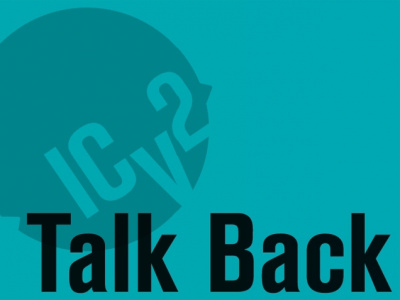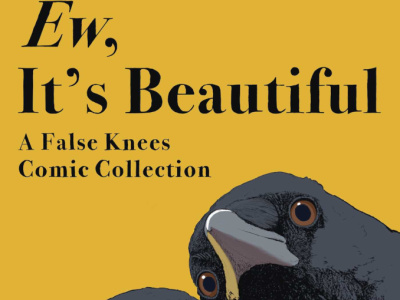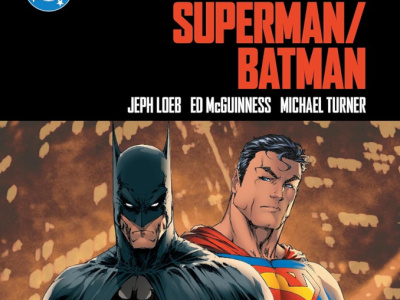Confessions of a Comic Book Guy is a weekly column by retailer Steve Bennett of Mary Alice Wilson's Dark Star Books in Yellow Springs, Ohio. This week Bennett talks about the opportunities represented by the most popular comics in the world:
The latest volume of the Asterix series, Asterix and the Falling Sky, has a print run of eight million copies; how many did you order for your store?
I'd be lying if I said Dark Star sold a lot of copies of Asterix or TinTin, the other well-known translated-into-English European comic series. Weeks can go by without us selling a single one, but inevitably by year's end we'll take inventory and discover we need to order more.
Of course our location helps; Dark Star is close to half a dozen colleges and a military base, and receives a steady stream of international tourists (just this morning we had a group of Australians). Neither series has much 'brand name' recognition in the States but they do have a high profile among the college educated, those who've lived overseas, and people from Germany to India.
Honestly, selling Asterix and TinTin isn't going to create a great new revenue stream for your store. For one thing, the people who do buy them are unlikely to become regular customers because (a) there are only so many TinTins and there'll never be a new one, (b) it's been four years since the last volume of Asterix, and (c) there really isn't anything else even remotely 'like' either series you can sell them.
That was the problem we had with Elfquest in days of yore; there were Elfquest fans desperately waiting for the next issue and it drove us crazy we weren't able to sell them anything else while they waited. They weren't just uninterested in super-hero comics, even when publishers began releasing fantasy titles they still weren't interested; because they weren't comic books fans, they were Elfquest fans (a decade later we have the same problem with Sandman).
But there is a chance you'll be able to sell copies to some of your current customers. OK, not those eagerly waiting for the next issue of Infinite Crisis, but the more adventurous ones looking for something genuinely different or the next hot thing. And with manga becoming increasingly mainstream, the trendy are going to have to go elsewhere if they want something really outre; bandes dessinees (French for graphic novel) just might be it.
So when it becomes available, you might want to get a copy of Asterix and the Falling Sky, read it, put it in a prominent location, make a sign stressing it's the best selling comic book in the world (it's the detail most likely to get the attention of a passing customer) and start talking it up. The last thing I want to do is advocate buying merchandise you can't sell, but even if Asterix doesn't sell at least it'll class up your place. Plus you'll know you tried something new and be better off than if you'd spent the money on more copies of Son of Vulcan or Machine Teen.
I've always loved European comics but realize I'm in the minority, as over the years half a dozen publishers tried to sell bandes dessinees to the direct sales market without much luck. Part of the problem has been the material chosen (Americans love heroes and while Europe has lots of their own, publishers have instead chosen volumes either too dryly literary or explicit for the average super-hero fan) and the format. There's now a whole generation of readers who don't know Marvel and DC released their first original graphic novels in the larger European album format. But neither retailers nor fans liked them much because they couldn't be racked, sold or stored like a comic book.
On the other hand all attempts so far to compress the art to standard American comic book size has been a failure as well, seen in the several attempts to bring over Judge Dredd and the other features from the UK's 2000 AD.
Now, nobody asked me, but I think these failures have as much to do with (a) the quality of the translations and (b) the lettering. I know this will be seen as heresy by the purists over at The Comics Journal but if TinTin is ever gong to be a major success in America first it needs to be translated from English to American, then have a more American style of lettering added. I'm sure someone over at Comicraft could come up with a font that could blend in with Herge's art but still read 'warmer' to our eyes. Those things were considered when adapting manga to the American market and that's turned out pretty well, hasn't it?
So, what gives me hope one day I'll be able to read translations of such European classics as Blake & Mortimer, Spirou, Michael Valliant, and Lucky Luke (heck, with a new CGI Smurfs movie in the pipeline, wouldn't it be perfect time for someone to finally bring over the graphic novels by Peyo from which they sprang)? The reason is the kids market, particularly the under-the-radar success of recent European imports like W.I.T.C.H. (and with Cartoon Network and Kids WB picking up the animated version of another Italian Disney series, Monster Allergy, in 2006, hopefully the comics will travel here as well) and the Winx Club comic books.







